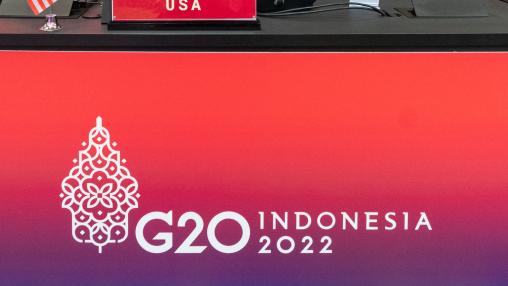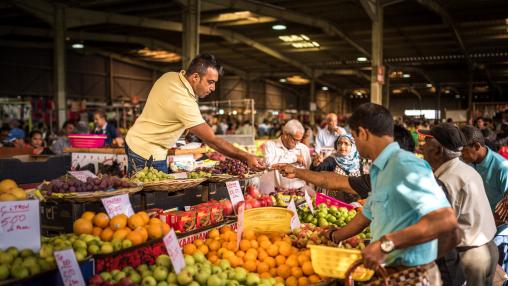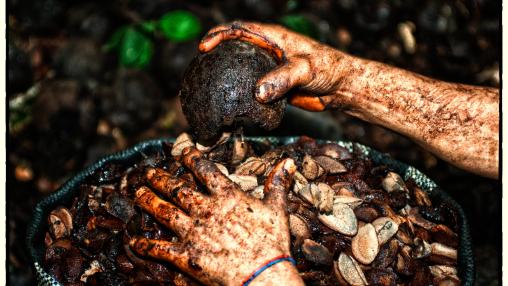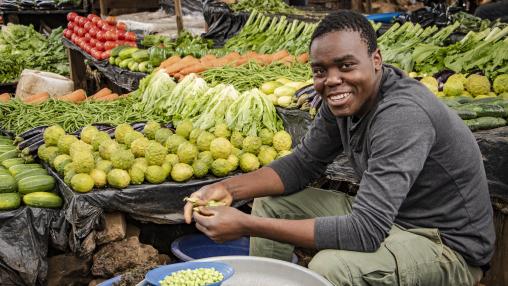
Suspension of the Black Sea Grain Initiative: What has the deal achieved, and what happens now?
Russia’s October 29 announcement that it was suspending its participation in the Black Sea Grain Initiative—which allows shipments out of Ukrainian ports—was not a surprise; Russia had been skeptical of the deal since the start. But now the supply disruptions will begin again: the move will have a negative impact on Ukraine, its customers, on world market prices—and global food security, particularly for countries in the Middle East and North Africa (MENA) region.

G20 Agriculture Ministers underscore importance of food system sustainability, open and fair trade, and digital innovations as long-term food crisis responses
Even as the effects of the COVID-19 pandemic dissipate, the world continues to face a severe food security crisis, exacerbated by the ongoing Russia-Ukraine war, putting it further off track to achieve Sustainable Development Goal 2—ending hunger and malnutrition in all its forms by 2030.
Private Sector Impacts on Food Security and Nutrition: Examples from Bangladesh & Rwanda
Join USAID’s Private Sector Engagement Secretariat and USAID’s Rwanda and Bangladesh Missions on Thursday, October 27, 2022, at 9:30 a.m. ET to learn about promising practices for engaging the private sector to advance and sustain inclusive, agriculture-led economic growth and a well-nourished population, especially among women and children.
Globalization and food security: What could 20 years of IFPRI research teach us?
2022 has been marked by another global food price crisis, the third in 20 years. As food systems have become more interconnected, the debate around globalization and food security has reemerged. Are we too interconnected? Are multilateral institutions the only way to tackle global challenges that require collective action, or is that belief fading?
Call for Action to Address the Global Food Security Crisis
The world is facing a potential food crisis worse than any seen since World War II. With Russia’s devastating war on Ukraine, a historic drought and heat wave in China, and an irregular monsoon season in South Asia, food supplies from several of the world’s largest granaries are highly uncertain and concerning. Global hunger has been rising since 2015, and the number of people facing acute, crisis-level food insecurity has doubled to well over 200 million. Famine is threatening the lives of large populations in the Horn of Africa, Yemen, and South Sudan.

No end in sight yet for the global food price crisis
After the sharp rise in international prices of wheat and other staple foods in the wake of Russia’s February invasion of Ukraine, since May prices have fallen back to pre-war levels. Has the global food price crisis now come to an end? Unfortunately, such a conclusion is premature. Domestic food prices for consumers continue to rise in most countries. Meanwhile, ongoing uncertainties—not the least of which is the continuing war—augur for continued turmoil in global food markets.

Global Food Policy Report 2022 Nepal launch: Accelerating innovation and investments to transform food systems
Climate change poses a growing threat to efforts to build sustainable food systems. The COVID-19 pandemic and the current Ukraine crisis have further exacerbated global food and nutrition insecurity, leading to significant increases in poverty, hunger, and malnutrition. A July 18 launch event for IFPRI’s 2022 Global Food Policy Report (GFPR) in Kathmandu, Nepal, explored the potential for more effective policies and programs focused on climate impacts and food systems.
The Ukraine crisis: Unraveling the impacts and policy responses in low- and middle- income countries
The conflict in Ukraine is having widespread deleterious impacts on the economies and food systems of many low- and middle-income countries. Rising prices for food, fuel, and fertilizer have raised pressing concerns about food security and poverty. To better understand the risks in specific countries, IFPRI researchers have modeled the impacts of prices of the fuel, fertilizer, and food price shocks on GDP, employment, poverty, hunger, and diet quality in 19 countries in Africa and Asia, and examined the relative cost effectiveness of different policy interventions.

2022 State of Food Security and Nutrition in the World report: Repurpose agricultural subsidies to make healthy diets affordable, reduce rising hunger
The world continues to lose ground in its efforts to end hunger, food insecurity, and malnutrition in all its forms by 2030, according to the recently-released 2022 State of Food Security and Nutrition in the World (SOFI) report. As many as 828 million people were affected by hunger globally in 2021 (around 10.5% of the world population)—an increase of 46 million since the end of 2020 and of 150 million since the COVID-19 pandemic began a year earlier.

The Russia-Ukraine grain agreement: What is at stake?
On July 22, Ukraine and Russia reached an agreement to allow exports of grain and other agricultural products to resume from selected Ukraine Black Sea ports after months of Russian blockade. The agreement comes at a time when storage capacity is reaching its limits, with the much of the 2022 wheat harvest and the approximately 20 million metric tons of grains and oilseeds harvested in 2021 remaining in storage—unable to ship because of the blockade.